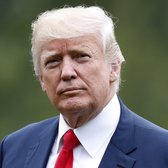Renegotiate NAFTA
Donald Trump
“A Trump administration will renegotiate NAFTA and if we don't get the deal we want, we will terminate NAFTA and get a much better deal for our workers and our companies. 100 percent."
Trump-O-Meter

Promise Kept